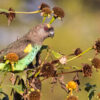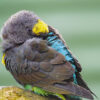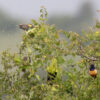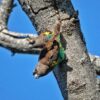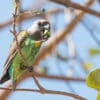Meyer’s Parrot
Also known as:
Brown Parrot, Sudan Brown Parrot
Also known as:
Brown Parrot, Sudan Brown Parrot

Poicephalus

meyeri
Size:
21 cm (8.2 in)
Weight:
100-135 g (3.5-4.7 oz)
Subspecies including nominate:
six: P.m. meyeri, P.m. saturatus, P.m. matschiei, P.m. transvaalensis, P.m. reichenowi, P.m. damarensis
Colour Adult:
P.m. meyeri: Both adults grey/brown with yellow stripe across crown; blue/green lower breast to tail coverts and rump, variably more blue than green; yellow thighs, bend of wing, lesser wing coverts and underwing coverts; underwings where flight feathers are pale grey suffused with yellow; tail brown. Beak dark grey. Cere bare and brown/grey, eye ring brown/grey. Eye orange/red.
P.m. transvaalensis: Both adults as in meyeri, but with paler head and upperparts; little yellow or absent across crown; lower underparts more blue; bright blue rump.
P.m. damarensis: Both adults as in transvaalensis, but in general paler; yellow band across crown absent.
P.m. reichenowi: Both adults as in meyeri but darker brown; yellow stripe across crown absent; undersides of flight feathers dark grey.
P.m. matschiei: Both adults as in reichenowi but with less yellow band across crown; underparts washed with blue; bright blue rump.
P.m. saturatus: Both adults head and upperparts darker brown; green rump, suffused with pale blue; undersides of flight feathers dark grey.
Colour Juvenile:
Generally more greenish-brown than adult. No yellow on head or thighs. Less yellow on bend of wing. Underwing green and brown. Underparts more green. Eye dark brown.
Call:
Call a series of screeches often with brief pauses. Birds in flight duet with one another. A growling call can rise to a shrieking cry when alarmed. Flock give a chorus of excitement calls. Captive birds are mimickers.
More Information:
Content Sources:
CITES
Avibase
BirdLife International
Cornell Lab of Ornithology/Birds of the World
Parrots: A Guide to Parrots of the World, Juniper and Parr, 1998
Parrots of the World, Forshaw and Cooper, 1989. 2010 edition
Parrots of the World, Forshaw, 2006.
Parrots in Aviculture, Low, 1992.
Parrots: Their Care and Breeding, Low, 1986.
Psittacine Aviculture, Schubot, Clubb and Clubb, 1992.
Captive Status:
Common
Longevity:
20-25 yrs
Housing:
Walk-in aviary, minimum length 2.1 m (7 ft), or indoor cage minimum length 1.8 m (6 ft).
Diet:
Cooked beans and pulses, boiled corn; sunflower, dry, soaked or sprouted; walnuts, fruit, especially apple, orange, banana, rearing food (hard-boiled egg, wholegrain bread and carrot, all ground to crumbly consistency); fresh vegetables, complete pellet.
Enrichment:
Enjoys bathing so provide overhead misters or shallow water bowls; foot toys, destructible (non-toxic) toys, non-destructible (non-toxic plastic) toys, food-finder toys, preening toys, different texture and size hanging perch toys, fir, pine, elder or willow branches, push-and-pull toys (sliding up and down), vegetable tanned leather toys.
Nest Box Size:
Vertical box, 12″ x 12″ x 24″ (30.5 cm x 30.5 cm x 61 cm).
Clutch Size:
2 to 4
Fledging Age:
9 weeks
Hatch Weight:
—
Peak Weight:
—
Weaning Weight:
—
World Population:
Unknown but reported as generally common. Stable.
IUCN Red List Status:
Least Concern
CITES Listing:
Appendix II
Threat Summary:
Not globally threatened. Generally common in some parts of range such as NE Central African Republic, Angola, Zimbabwe and W Darfur; scarce or absent in others like Serengeti National Park, Tanzania. Decline thought to be due to habitat destruction and persecution owing to crop damage. Also has been heavily trapped for wild bird trade.
Range:
P.m meyeri: NE Cameroon through S Chad east to S Sudan, W Ethiopia and SW Eritrea.
P.m. transvaalensis: S Zambia and N Mocambique through Zimbabwe to NE Botswana and south to Transvaal, NE Republic of S Africa.
P.m. damarensis: NW Botswana, west to C Namibia and S Angola.
P.m. reichenowi: N and C Angola and SW Democratic Republic of Congo.
P.m. matschiei: SE Democratic Republic of Congo, C and N Zambia and northern Malawi SW Tanzania.
P.m. saturatus: W Tanzania, through Burundi, Rwanda and E Democratic Republic of Congo to Uganda and C Kenya, east to Meru.
Habitat:
Occurs in wide variety of woodlands: dry savanna, gallery and riparian woodlands, secondary growth and cultivated areas. Up to 2200 m (7216 ft).
Wild Diet:
Eats fruits such as Afzelia quanzensis, Melia volkensii, Kigelia africana and Ficus sycomorus, also figs, marulas, and takes cultivated oranges and grain. Also the green pods of several Acacia species, as well as Brachystegia and other leguminous trees. Other food plants include Ziziphus abyssinica, Uapaca nitidula, Monotes glaber, Combretum, Grewia, Sclerocarya, Pseudolachnostylis, Schotia, Kigelia africana, Diospyros mespiliformis, and Combretum imberbe. Also takes some insects, including caterpillars.
Ecology and Behaviour:
Found occasionally in suburban areas. Occurs in pairs or groups of up to 50 birds at food sources. Roosts in tree cavities. Shy and wary.
Clutch and Egg Size:
2 to 4, ovate, glossy eggs, 25.5 x 20.0 mm (1 x 0.8 in).
Breeding Season:
April-May, Zimbabwe and Botswana; May-September Zambia, Angola and Malawi; December-January Sudan; June, Malawi; March–June, South Africa; April–October, Ethiopia. Nest is in old woodpecker cavity.
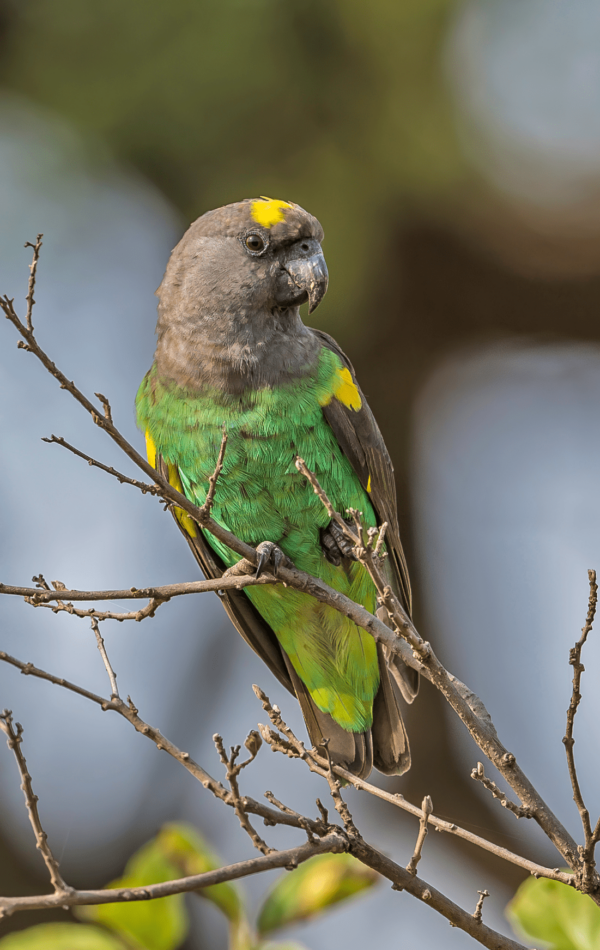
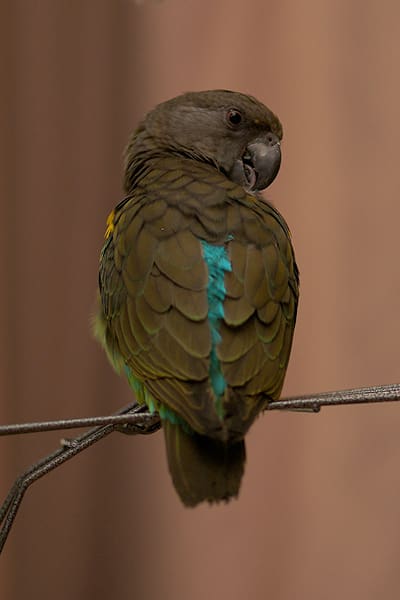
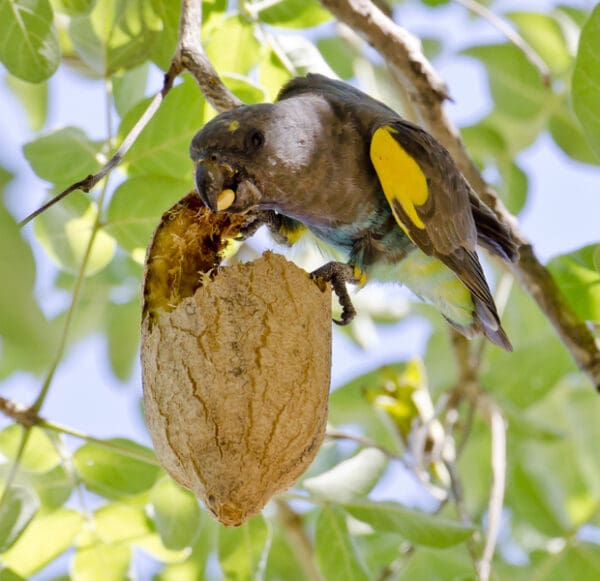
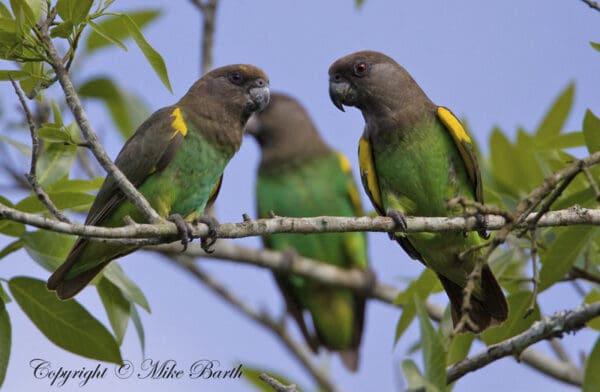
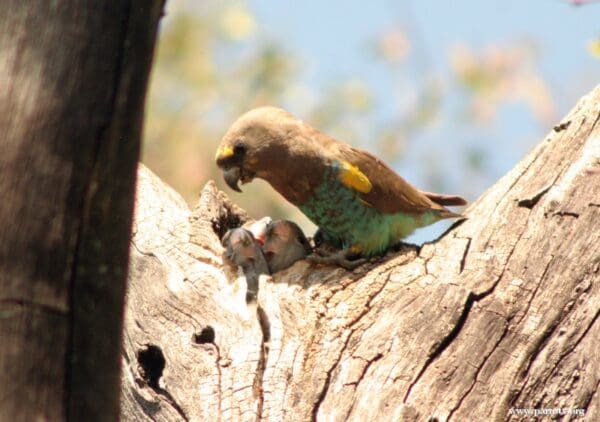

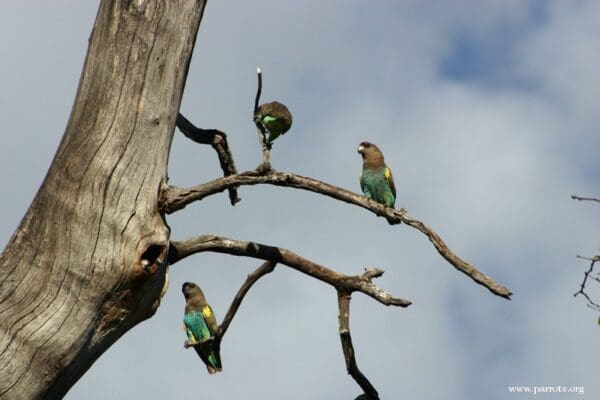
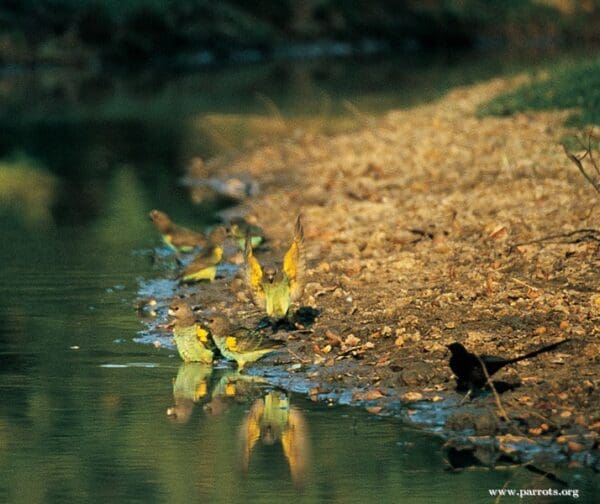
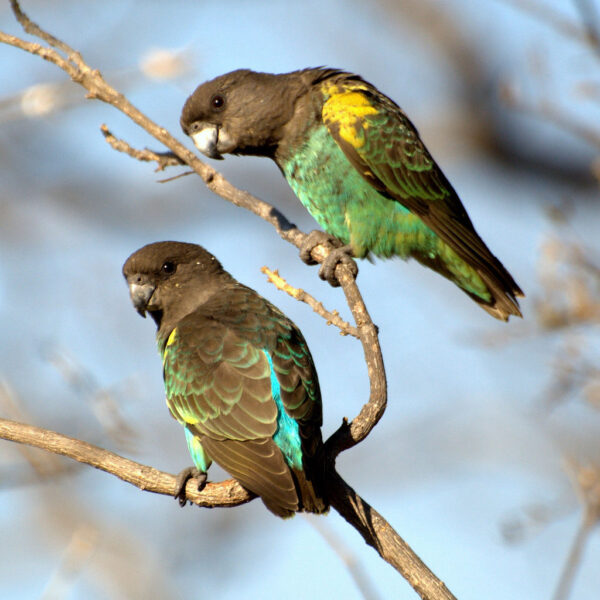
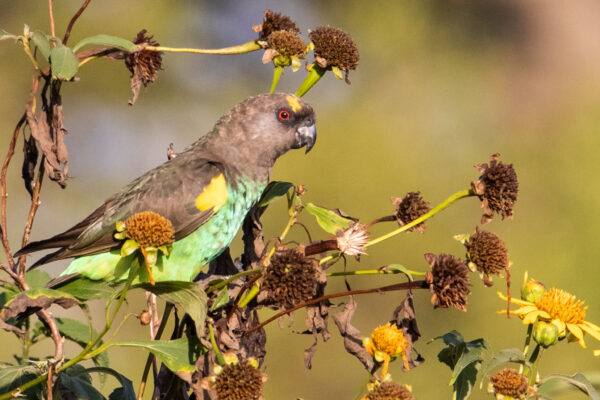

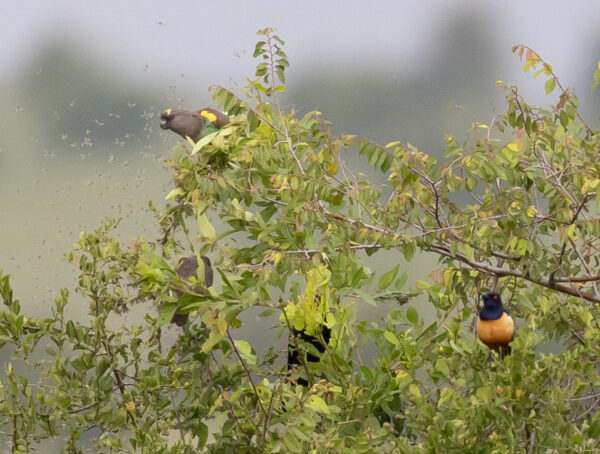
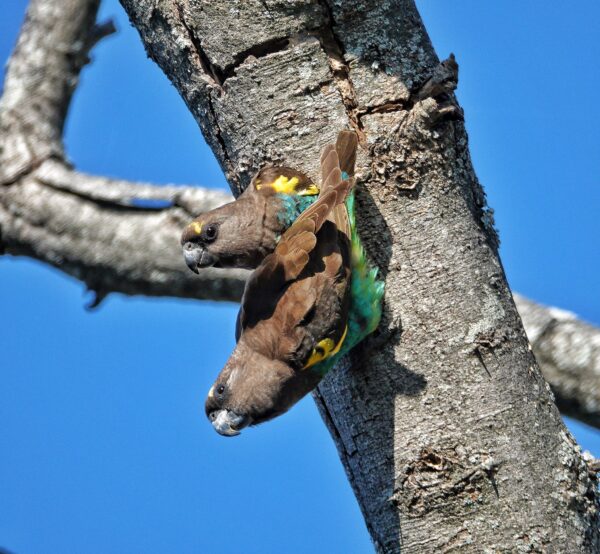

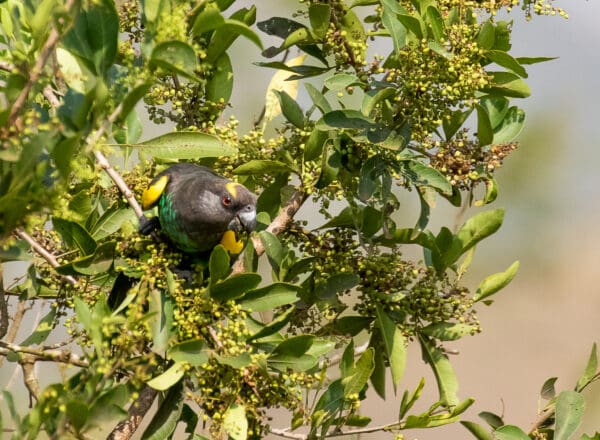
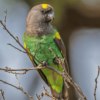
![© Papooga [CC BY 2.0] via Flickr A Meyer's Parrot preens itself](https://parrots.org/wp-content/uploads/2023/01/wpt_Meyers-Parrot_1111-19-100x100.jpg)
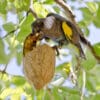
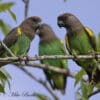
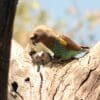

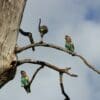
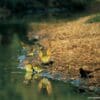
![© Poicephalus_meyeri_-Zimbabwe_-two-8.jpg: Oce Eecoderivative work: Snowmanradio [CC BY 2.0] via Wikimedia Commons Wild Meyer's Parrots perch in a tree](https://parrots.org/wp-content/uploads/1990/07/Meyers-Parrot-Wikimedia-Commons-100x100.jpg)
